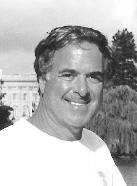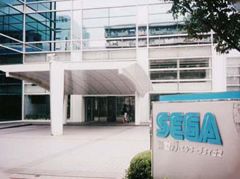In the turbulent month of October, 1989, Sega was busy with their new Genesis console, which had launched the month before. It was a time of great change at the company, so much so that it was also  experiencing a shift in leadership. It was during this period that Michael Katz took over at Sega of America. Having previously been the head of both Epyx and Atari, he had all the qualities Sega founder David Rosen needed to get the American branch of the company off the ground.
experiencing a shift in leadership. It was during this period that Michael Katz took over at Sega of America. Having previously been the head of both Epyx and Atari, he had all the qualities Sega founder David Rosen needed to get the American branch of the company off the ground.
During Katz’s tenure, Sega introduced Sega Visions Magazine and launched their famous ad campaign Genesis Does what Nintendon’t, as part of an all-out assault on Nintendo’s market share. Though he may not have been at Sega when the Genesis overtook the market, his influence and efforts were definitely a large reason why it became the success that it was.
Mr. Katz was kind enough to spend some time with Sega-16 and talk about his time as president of Sega.
Sega-16: Between 1988 and 1989, Sega was working on replacing the Master System with the Genesis. What was it like when you arrived? What was the atmosphere at the company at this time?
Michael Katz: I arrived one month after Genesis launched (Oct. 1989). The company was small (under 50 people). They had gone thru 2/3 presidents( Gene Lipkin, Bruce Lowery) in the “Master System” days. Dave Rosen, Vice Chairman of Sega (and original founder of Sega), located in L.A. (real estate/stock investor) was (from L.A.) overseeing the running of the company. I reported to him and Nakayama in Japan.
Sega was basically at that time a marketing/distribution company in the U.S. Hardware development and software development was coming from Japan. There was a small company atmosphere. The employees were wondering what the new management would be like, and how much control the Japanese would permit us to have. Paul Rioux, the new COO, started the same week and reported to me. I had known Paul at Mattel, where we had both been in the 1970’s. I initially had to deal with keeping current employees happy, determining the quality of the staff and getting into the job of building Sega vs Nintendo — the juggernaut.
Sega-16: Sega of Japan had a reputation for being very controlling. Is this accurate? How much freedom was the American branch given for the Genesis’s launch?
Michael Katz: Sega Japan was not that controlling. They did have a Japanese management person in our offices in an administrative/coordinating role. Each evening, that person reported to Japan by phone, telling the Japan execs what we were up to and answered any questions they had. Shinobu Toyoda was that person, initially, and then it became Shinobu and a higher level person — Dai Sakari. I liked them both. Shinobu still is a part-timer/consultant to Sega U.S.
I wrote a monthly status report to Nakayama with the month’s achievements. I rarely visited Japan. I was involved with building Sega U.S. as a major force in the market, and my style is “task-oriented/goal oriented” and I could care less about politics. I had a job to do and I went ahead in my fashion to get it done. Dave Rosen knew and understood this and the nature of my management style.
We didn’t have enough software for Genesis and what there was, wasn’t oriented to the U.S. market, so we decided to set up an internal U.S. development group, develop the sports game category and use our internal group and select independent U.S. developers to develop some other genres; and Japan development maintained responsibility for action/character/arcade-type games. I brought in Ken Balthaser and we built the first Sega U.S. development department, that became significant in size and quality.
Sega-16: Gamers were very impressed with the leap in graphics quality the Genesis represented. Did it sell as well as expected initially, or did it take some time to gain steam?
Michael Katz: Sega Japan set an arbitrary number for Genesis sales volume of 1 million units as a sales goal for the first six months. Each day I was supposed to chant Hyakumandai, which meant one million units in Japanese. We sold about 500K units — which I considered damn good — because Genesis was new, didn’t have a large, broad software library initially, the Nintendo franchise was hard to crack, Nintendo owners were waiting to see the Super Nintendo (introducing in summer 1991), and all the key retailers were not going to commit heavily until after the Nintendo introduction. The Sega Japan management didn’t believe this, or more likely, would not accept it, and it eventually became the reason/basis for my departure.
Genesis gained steam in 1991, when our software library was in place, when gamers saw Super Nintendo, and many of them deserted to Genesis for their 16-bit system, and when our aggressive and unique Genesis Does What Nintendon’t positioning and strategy took hold.
Sega-16: Nintendo’s ironclad licensing agreements at the time prevented competitors from securing many arcade ports, but Sega was lucky enough to have their own catalogue of hits to rely on. How big a part do you think they played in the initial success of the Genesis?
 Michael Katz: The success of Genesis initially came from us having the “personality” licensing position for software. It was defensive, and brilliant, if I do say so myself. We COULD NOT compete with the strength of the Nintendo arcade licenses, so as a defensive move, we decided to get (for awareness) personalities: Montana, Pat Riley, Lasorda, Michael Jackson, Holyfield; develop good games around them, and make the most of a tough competitive positioning/stance — GENESIS DOES WHAT NINTENDON’T, which meant to the consumer: more powerful hardware, 16-bit graphics/animation, and exclusive personalities that Nintendo couldn’t claim to have. This was smart marketing, and, as Howard Lincoln (from Nintendo) is quoted as saying, was what caused Mr. Arakawa (Nintendo of America’s president) to admit privately, had turned the tide toward Sega in 1991.
Michael Katz: The success of Genesis initially came from us having the “personality” licensing position for software. It was defensive, and brilliant, if I do say so myself. We COULD NOT compete with the strength of the Nintendo arcade licenses, so as a defensive move, we decided to get (for awareness) personalities: Montana, Pat Riley, Lasorda, Michael Jackson, Holyfield; develop good games around them, and make the most of a tough competitive positioning/stance — GENESIS DOES WHAT NINTENDON’T, which meant to the consumer: more powerful hardware, 16-bit graphics/animation, and exclusive personalities that Nintendo couldn’t claim to have. This was smart marketing, and, as Howard Lincoln (from Nintendo) is quoted as saying, was what caused Mr. Arakawa (Nintendo of America’s president) to admit privately, had turned the tide toward Sega in 1991.
Sega-16: Sega sought to counteract Nintendo’s dominance by licensing the top sports names of the time, like Pat Riley and Joe Montana. We all know how successful signing Joe Montana proved to be, but was it the same with the other titles? Did they sell as well?
Michael Katz: The key sports titles, early on, sold the best. I fought to get Japanese management to let me go after and sign Joe Montana for the Genesis football franchise. We outbid Nintendo and grabbed Joe. I gave him a check for $1.7 million (advance and guarantee.) This was a critical move, because it demonstrated to the market that Sega and the Genesis were REAL. The Montana franchise over three years went on to net Montana $3.5 Million in revenues — that’s how successful it was. I had to fight hard to get approval from Japan for the Montana connection. I’m still waiting for a “thank you!”
Sega-16: Did it ever seem at the time like the Genesis had a shot a toppling the NES?
Michael Katz: Nintendo had 90% of the market, so I was willing to settle for 40-50% for Sega. We knew we had the ingredients with a 16-bit system and a decent software library to give them some competition, but I felt that their lock on all the hot arcade titles (being ported over from the Namcos/Taitos. Konamis, Capcoms, etc — EXCLUSIVELY TO NINTENDO — would make things tough.) I’m surprised we got such momentum, coming off of the introductory 18 months, but I’m very gratified by it. The success of the Sonic The Hedgehog franchise, created in Japan, was important to this success.
Sega-16: Many people are quick to note Tom Kalinske’s decision to tackle Nintendo head-on in advertising, but you implemented the classic “Genesis Does what Nintendon’t” campaign first. How did you ever convince Sega of Japan to take them on directly?
Michael Katz: Competitive advertising/positioning has always been a strong weapon for me. I started as a brand manager at Lever Brothers and we competed against Proctor and Gamble with competitive advertising. Right after I became Vice President of Marketing at Coleco we did the FIRST ever (1979) competitive electronic games TV commercial against Mattel in the handheld game space, Coleco’s Mr. Quarterback vs Mattel Football 1 (ironic, because I started the hand held games line at Mattel). I had a history of seeing competitive commercials work, when your product had a strong message/advantage vs. competition. Against Nintendo, Genesis had a compelling product story, and we needed to “raise hell”/make noise with maximum awareness and a gutsy get-in-their-face approach. I didn’t talk to/fight with Sega Japan about it. I just told Dave Rosen that this was what we were going to do, I told the ad agency to execute on a competitive strategy, and the rest is history. It really irks me that subsequent Sega management has taken credit for a lot of this. They ought to study their history a little better, “get a life,” and try to take credit for what they really did or didn’t do.
Sega-16: Bill Kunkel and others have stated that Sega Visions was just an advertising tool with little creative control. Is this true?
Michael Katz: I basically recall that as being true in the minds of editors like Bill. It was like an internal propaganda/PR newsletter for Sega owners and prospects. I don’t really see anything wrong with that, based on our goals. I remember that it was a pain in the ass to edit and publish and it was hard to get people to work on it.
Sega-16: You once mentioned that Sega of America didn’t think too much of Sonic the Hedgehog as a character, but came away impressed with the game in action. Did you ever think the game would be so successful? Nintendo sure didn’t!
Michael Katz: I certainly under-estimated the potential of Sonic. Thank God there was good and sustained gameplay (critical in any game success). I know that I thought it was nuts, when we were going for targeted and widespread awareness in everything we did, for the Japanese to develop a game based on a type of character — a hedgehog — that no kid in the U.S. 6-16 year-old demographic would have any familiarity with.
 Sega-16: What do you think were Sega’s biggest mistakes during the mid ’90s?
Sega-16: What do you think were Sega’s biggest mistakes during the mid ’90s?
Michael Katz: I didn’t keep close tabs on why Sega lost their edge; I was in a post-Sega era of my life.
Sega-16: Why exactly, did you leave Sega?
Michael Katz: Japan management replaced me with Tom Kalinske. I never knew how to say Hyakumandai. I guess they didn’t want to hear how it (life) really was, and they needed more warm fuzzies from their U.S. president… That ain’t me. Carpe Diem.
We are very grateful to Mr. Katz for his candor and wish him the best. He’ll always be the “man behind the Genesis” to us!

Pingback: Level Max 080: La sacro sainte Mega Drive (Partie 1) - Onestquedesjoueurs.fr
Pingback: História dos videogames: a história do Mega Drive - Memória BIT
Pingback: O Marketing do Mega Drive | Drive Your Mega
Pingback: Know your History: The Katz Report | SEGA Nerds